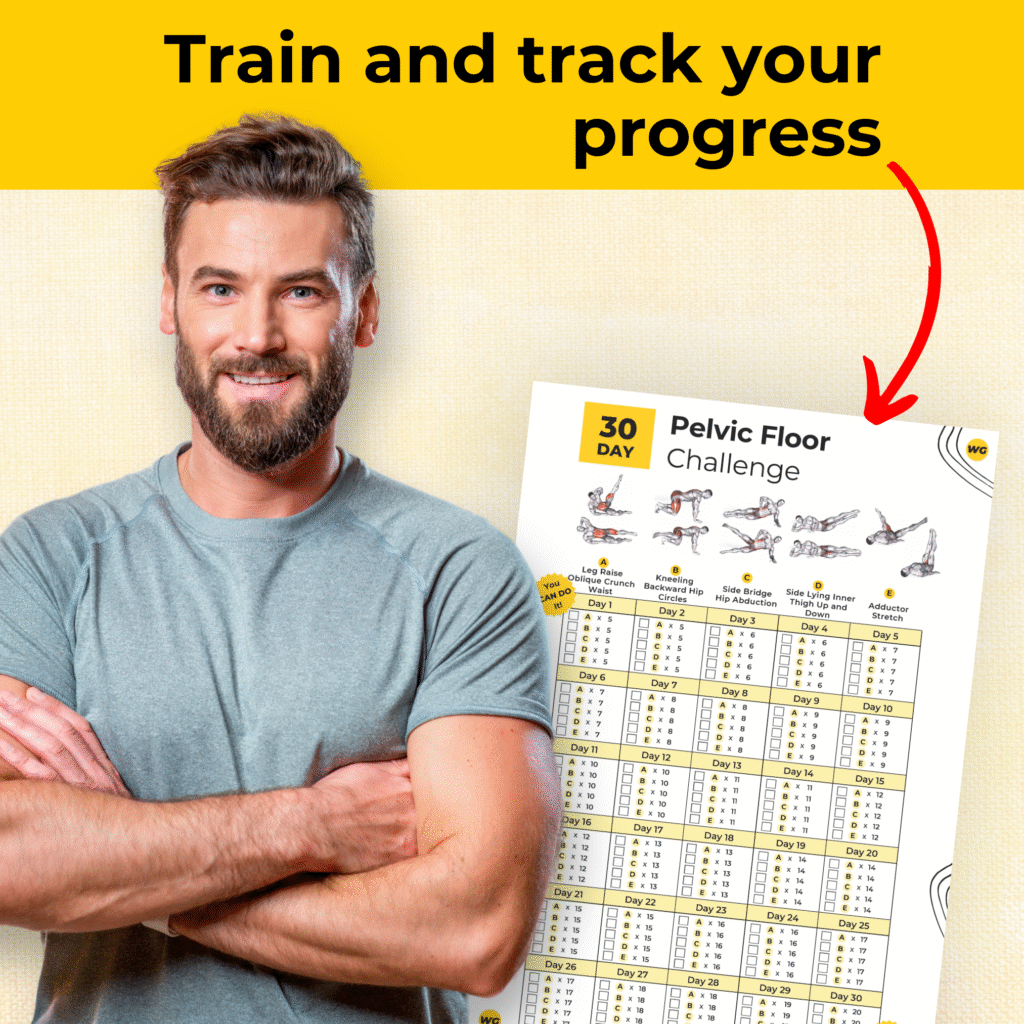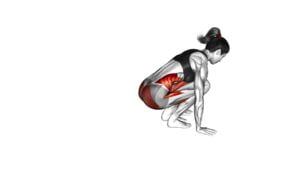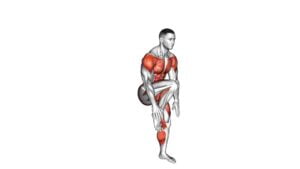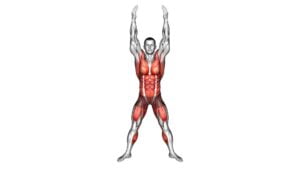Squat Thrust – Video Exercise Guide & Tips
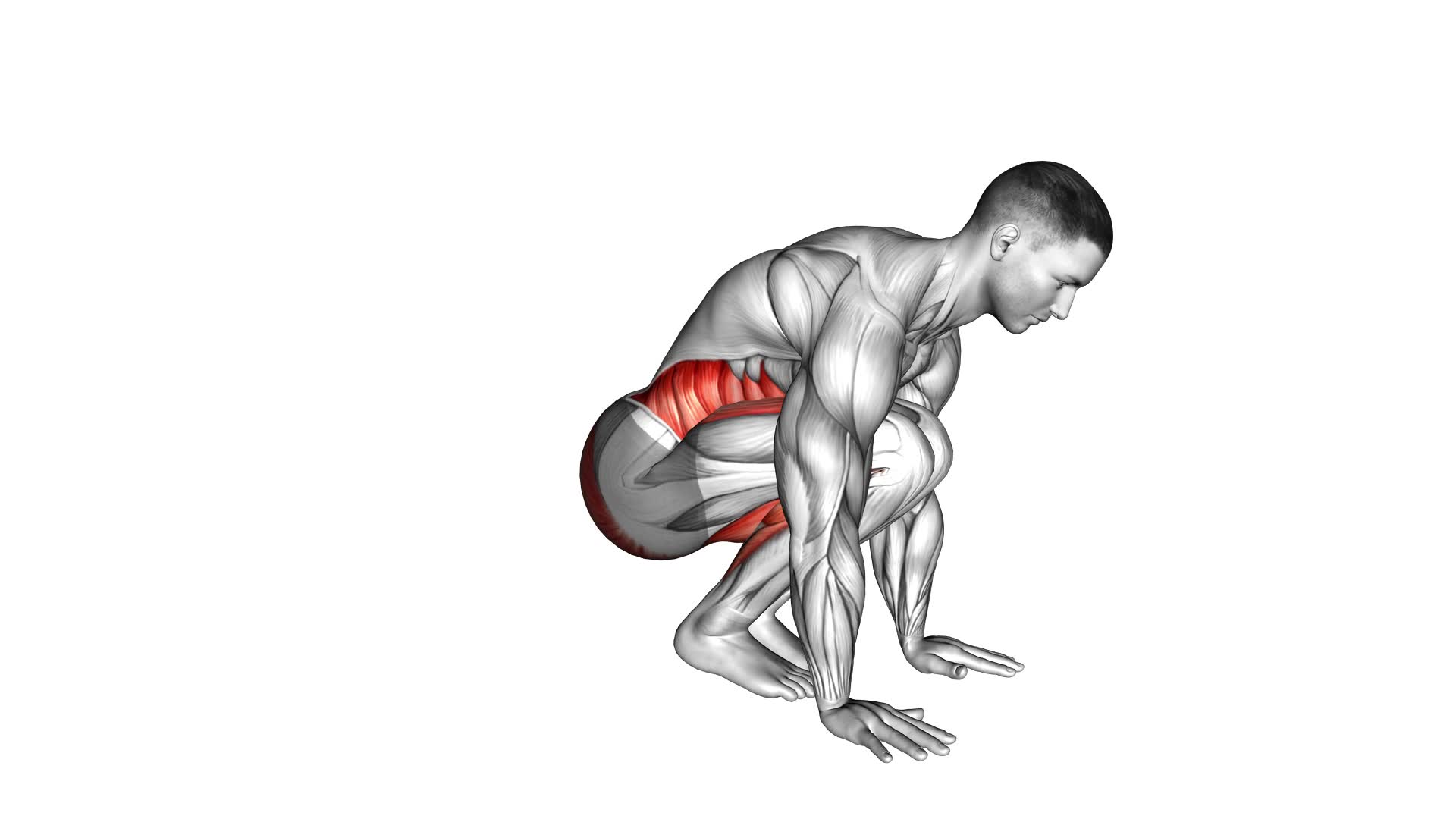
Are you looking to spice up your exercise routine? Look no further than the squat thrust!
Watch This Exercise Video
This video exercise guide and tips article will provide you with all the information you need to master this effective full-body exercise. Learn the proper form and technique, discover variations to keep things interesting, and avoid common mistakes.
Whether you're a beginner or looking to increase intensity, we've got you covered. Let's get ready to squat thrust!
Key Takeaways
- Squat thrusts engage multiple muscle groups.
- Squat thrusts improve cardiovascular fitness.
- Squat thrusts enhance explosiveness and power.
- Squat thrusts increase calorie burn.
Benefits of Squat Thrusts
Discover the numerous benefits of incorporating squat thrusts into your fitness routine. Squat thrusts, also known as burpees, are a powerful plyometric exercise that can yield incredible results. Plyometric exercises involve explosive movements that activate multiple muscle groups, leading to improved strength, endurance, and cardiovascular fitness. Squat thrusts provide a great full-body workout, targeting the arms, chest, shoulders, abs, glutes, and legs all in one fluid motion.
One of the key benefits of squat thrusts is their versatility. If you're looking for alternatives to traditional squat thrusts, you can modify the exercise to suit your fitness level. For beginners, you can start by eliminating the jump at the end of each rep or by using a step or bench to decrease the range of motion. On the other hand, advanced exercisers can add a push-up or a tuck jump to intensify the exercise.
Furthermore, squat thrusts are a time-efficient exercise. They engage multiple muscle groups simultaneously, making them an excellent choice for those with limited time for workouts. By incorporating squat thrusts into your routine, you can maximize calorie burn, improve agility, and boost your metabolism.
Now that you understand the benefits of squat thrusts, it's essential to learn the proper form and technique to avoid injury and maximize results.
Proper Form and Technique
To perform squat thrusts with proper form and technique, maintain a strong core and engage your muscles throughout the entire exercise. Here are some tips to help you execute the squat thrust correctly:
- Common Mistakes:
- Allowing your back to round: Keep your spine neutral and avoid hunching or arching your back.
- Using momentum: Focus on controlled movements and avoid using momentum to complete the exercise.
- Not engaging your core: Your core muscles play a crucial role in stabilizing your body during squat thrusts. Ensure that you engage your core throughout the movement.
- Beginner Modifications:
- Step back instead of jumping: If you find the jumping motion too challenging, you can modify the exercise by stepping one foot back at a time instead.
- Reduce the speed: Slow down the pace of your squat thrusts to focus on maintaining proper form and engaging your muscles effectively.
Variations to Spice Up Your Routine
Looking to add some excitement to your squat thrust routine?
There are several variations you can try to challenge yourself and keep things interesting.
First, consider modified squat thrusts, where you can modify the exercise to suit your fitness level.
Next, try incorporating plyometric variations, like adding a jump at the end of each rep to increase the intensity.
Lastly, don't forget about resistance bands – using them during squat thrusts can help to target different muscle groups and add resistance to your workout.
Modified Squat Thrusts
Try incorporating different variations of modified squat thrusts into your routine to add variety and challenge to your workout. Here are some squat thrust modifications and advanced squat variations you can try:
- Jump Squat Thrusts: Start in a squat position, then explosively jump up, extending your arms overhead. As you land, immediately drop back down into a squat and repeat.
- Plank Jack Squat Thrusts: Begin in a plank position, with your hands directly under your shoulders. Jump your feet wide apart, then quickly jump them back together, and jump your feet forward towards your hands into a squat position. Repeat this movement.
- Single-Leg Squat Thrusts: Perform a regular squat thrust, but as you jump your feet back, lift one leg up and bring it towards your chest. Alternate legs on each repetition.
These variations will target different muscle groups and increase the intensity of your workout. Remember to maintain proper form and listen to your body's limits.
Plyometric Variations
To add intensity and variety to your workout routine, incorporate plyometric variations of squat thrusts. Plyometric training involves explosive exercises that focus on increasing power and strength. By incorporating plyometric variations into your squat thrusts, you can take your workout to the next level.
One example of a plyometric variation is the plyo squat thrust, where you explosively jump up into the air after completing the squat thrust movement. This not only engages your lower body muscles but also challenges your cardiovascular system.
Another option is the plyo push-up squat thrust, where you perform a push-up after jumping your feet forward. This adds an extra challenge for your upper body and core muscles.
By incorporating these plyometric variations, you can increase the intensity and effectiveness of your squat thrust routine.
Now, let's explore how incorporating resistance bands can further enhance your workout.
Incorporating Resistance Bands
To add even more intensity and variety to your workout routine, spice things up by incorporating resistance bands into your squat thrusts. Resistance band exercises can help to target different muscle groups and increase the resistance of your squat thrusts.
Here are a few ways you can incorporate resistance bands into your routine:
- Attach the resistance band around your thighs: This will add extra resistance to your squat thrusts, targeting your glutes and thighs.
- Hold the resistance band in your hands: By pulling the band apart as you perform the squat thrust, you engage your upper body muscles, including your shoulders, chest, and back.
Alternative equipment options for adding resistance to your squat thrusts include using dumbbells or kettlebells. These options can provide a similar effect to resistance bands and allow you to vary the intensity of your workout.
Experiment with different resistance levels and equipment options to find what works best for you.
Common Mistakes to Avoid
Avoiding poor form is crucial when performing squat thrusts. To ensure you get the most out of this exercise and reduce the risk of injury, it's important to avoid some common mistakes.
One common mistake is using momentum instead of controlled movements. It's important to engage your muscles and perform the exercise with control, rather than relying on momentum to complete the movement.
Another mistake is allowing your knees to cave inwards during the squat portion of the exercise. This can put unnecessary stress on the knees and increase the risk of injury. Be mindful of your knee alignment and make sure they stay in line with your toes throughout the exercise.
Additionally, not fully extending your hips at the top of the movement can limit the effectiveness of the exercise. Make sure to fully extend your hips and squeeze your glutes at the top to get the most out of each repetition.
How to Modify Squat Thrusts for Beginners
If you're new to squat thrusts, don't worry! There are beginner-friendly squat variations that you can try.
These modifications will help you maintain proper form while gradually increasing the intensity of the exercise.
Beginner-Friendly Squat Variations
If you're a beginner, try incorporating easier squat variations into your workout routine to modify squat thrusts. Here are some beginner-friendly squat variations that you can try:
- Assisted Squat Thrusts: Start by placing your hands on an elevated surface, like a bench or step, and perform the squat thrust movement. This modification helps to reduce the intensity and provides additional support for beginners.
- Squat Holds: Instead of performing the dynamic movement of squat thrusts, you can hold a squat position for a certain period of time. This is a great option for beginners who want to build strength and stability before progressing to the full squat thrust.
By incorporating these modifications into your workout routine, you can gradually build up your strength and improve your fitness level.
Now, let's move on to discuss proper form modifications for squat thrusts.
Proper Form Modifications
To modify squat thrusts for beginners, adjust your form by incorporating these modifications.
If you find the standard squat thrust too challenging, you can modify the exercise to decrease the difficulty level. Instead of jumping your feet back and forth, you can step one foot back at a time, making it easier to control your movements.
Another modification is to perform the exercise on an elevated surface, such as a bench or step. This reduces the amount of weight you have to lift and allows you to focus on proper form.
If you're still finding it difficult, you can try alternative exercises like mountain climbers or modified burpees, which provide similar benefits while putting less strain on your body.
Remember to listen to your body and gradually increase the difficulty as you progress.
Gradual Intensity Progression
To gradually increase the intensity of squat thrusts for beginners, you can incorporate a range of modifications to challenge your body and enhance your fitness level. Here are some advanced modifications that can help you in increasing the difficulty:
- Add a jump at the end of each repetition to engage your leg muscles and elevate your heart rate.
- Perform the exercise on an unstable surface like a Bosu ball or a balance board to improve your core stability and overall strength.
- You can also try adding a medicine ball or dumbbells to increase the resistance and further challenge your muscles.
By implementing these advanced modifications, you can continue to progress and push yourself to new heights in your squat thrust routine.
Now, let's move on to some additional tips for increasing intensity and progression in your workouts.
Tips for Increasing Intensity and Progression
Increase the intensity and progression of your squat thrusts by incorporating advanced variations and adding resistance.
To challenge yourself and further develop your strength and endurance, try these tips for increasing difficulty and incorporating advanced modifications into your workout routine.
One way to increase the intensity of your squat thrusts is by adding a plyometric element. Instead of just jumping your feet back into a plank position, explode off the ground and clap your hands before landing softly. This explosive movement will engage more muscles and elevate your heart rate.
Another advanced modification is to add a resistance band. Attach the band around your ankles and perform the squat thrusts as usual. The resistance from the band will make the exercise more challenging and help to build strength in your lower body.
If you're looking for a more advanced variation, try a single-leg squat thrust. Start in a plank position, then lift one leg off the ground and perform the squat thrust with the opposite leg. This variation will challenge your balance and core stability while still working your upper and lower body.
Remember to always listen to your body and progress at your own pace. Start with the basic squat thrust and gradually increase the intensity and difficulty as you become stronger and more comfortable with the exercise.
Frequently Asked Questions
How Many Calories Can You Burn by Doing Squat Thrusts?
Squat thrusts are a great exercise for burning calories. The effectiveness of squat thrusts lies in their ability to engage multiple muscle groups, making them a high-intensity workout.
The more intense your squat thrusts, the more calories you can burn. By incorporating explosive movements and increasing the speed and range of motion, you can maximize calorie burn.
Can Squat Thrusts Help With Weight Loss?
Squat thrusts can be beneficial for weight loss. By incorporating this exercise into your routine, you can burn calories and increase your metabolism.
To maximize the weight loss benefits, it's important to perform squat thrusts with proper form. This involves starting in a standing position, squatting down, placing your hands on the floor, kicking your legs back into a plank position, and then returning to the squat position.
Consistency and proper form are key to achieving weight loss goals with squat thrusts.
Are There Any Alternative Exercises That Target the Same Muscle Groups as Squat Thrusts?
Looking for alternative exercises that target the same muscle groups as squat thrusts? Well, you're in luck! There are several great options to choose from.
Burpees are a popular alternative that work similar muscle groups and provide a cardiovascular challenge.
Mountain climbers are another effective choice, targeting your core, shoulders, and legs.
If you prefer something lower impact, try jumping jacks or high knees.
Incorporating these alternative exercises into your routine will help you achieve your muscle group targeting goals.
Can Squat Thrusts Improve Cardiovascular Fitness?
Squat thrusts are a great exercise to improve your cardiovascular fitness. They offer numerous benefits for your overall health. By incorporating squat thrusts into your workout routine, you can increase your heart rate and improve your lung capacity.
To maximize the cardiovascular benefits, it's important to perform squat thrusts properly. Make sure to engage your core, jump explosively, and maintain a consistent pace throughout the exercise.
With regular practice, you'll see significant improvements in your cardiovascular endurance.
Is It Necessary to Warm up Before Performing Squat Thrusts?
Before performing squat thrusts, it's essential to warm up your body with dynamic exercises. This helps to prepare your muscles and joints for the intense movement involved in the exercise. A proper warm-up routine can increase blood flow, enhance flexibility, and reduce the risk of injury.
It's also important to be aware of common mistakes to avoid while performing squat thrusts, such as improper form or rushing through the exercise. Taking the time to warm up and perform squat thrusts correctly will maximize the benefits and minimize the risk of injury.
Conclusion
In conclusion, squat thrusts are a highly effective exercise that offer numerous benefits for overall fitness and strength.
By maintaining proper form and technique, variations can be added to keep your routine exciting and challenging.
It's important to avoid common mistakes and make modifications for beginners to ensure safety and progress.
By following these tips and gradually increasing intensity, you can maximize the benefits and achieve your fitness goals.

Author
Years ago, the spark of my life’s passion ignited in my mind the moment I stepped into the local gym for the first time. The inaugural bead of perspiration, the initial endeavor, the very first surge of endorphins, and a sense of pride that washed over me post-workout marked the beginning of my deep-seated interest in strength sports, fitness, and sports nutrition. This very curiosity blossomed rapidly into a profound fascination, propelling me to earn a Master’s degree in Physical Education from the Academy of Physical Education in Krakow, followed by a Sports Manager diploma from the Jagiellonian University. My journey of growth led me to gain more specialized qualifications, such as being a certified personal trainer with a focus on sports dietetics, a lifeguard, and an instructor for wellness and corrective gymnastics. Theoretical knowledge paired seamlessly with practical experience, reinforcing my belief that the transformation of individuals under my guidance was also a reflection of my personal growth. This belief holds true even today. Each day, I strive to push the boundaries and explore new realms. These realms gently elevate me to greater heights. The unique combination of passion for my field and the continuous quest for growth fuels my drive to break new ground.




